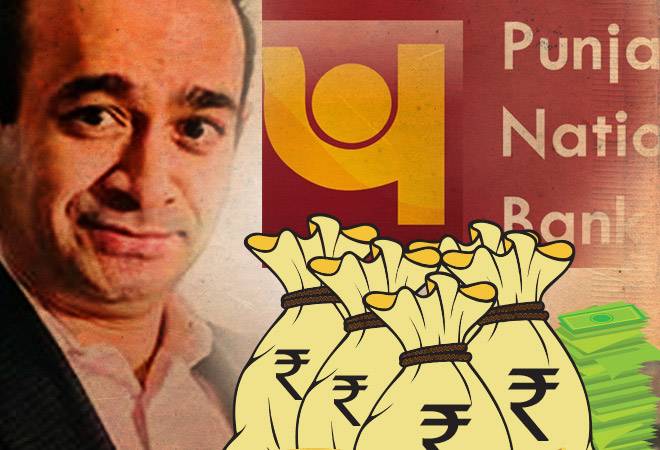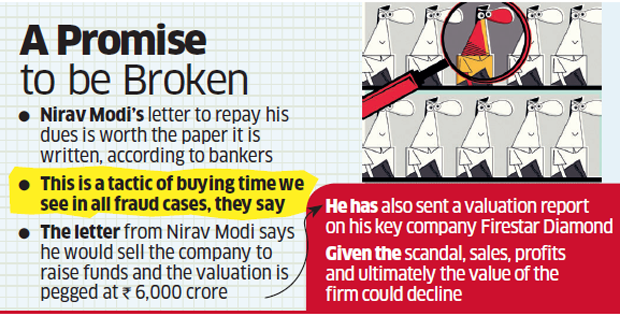Important list of dates and associated events:
- On April 30th 2012 TRAI comes out with DAS interconnect Regulation, keeping the tariff for cable television services under forbearance (Self Control) under this TRAI Regulation No. 09 of 2012.
TRAI DAS Interconnect Regulation DAS 30.04.2012
- In February 2014 TRAI approached the Hon’ble Supreme Court of India and filed an Interlocutory Application (I.A.) Nos. 71-75 of 2014 in CA no. 829-833 of 2009 in the ongoing case of TRAI Vs Set Discovery and Ors, and sought permission of the Hon’ble Court to review the Tariff Order as there are industry demands for the same, as no inflationary hike had been permitted since 2009.The Hon’ble Supreme Court allowed this IA based on and submissions made by TRAI and in its order dated 28th February 2014 held as under:
“On going through the averments in these applications, the Appellate Authority is permitted to review the tariff ceiling to make adjustment for inflation and notify the same, in exercise of its powers conferred under section 11(2) of the TRAI Act, 1997”
- Thereafter only, without following the due consultation process the TRAI notified THE TELECOMMUNICATION (BROADCASTING AND CABLE) SERVICES (SECOND) TARIFF (ELEVENTH AMENDMENT) ORDER, 2014 on 31st March, 2014. Giving effect to the increase of 27.5 per cent which was allowed in two installments i.e. vide Eleventh Amendment, 15% increase was allowed w.e.f. 01.04.2014 and a second installment of further 12.5% increase was allowed vide Thirteenth Amendment w.e.f. 01.01.2015 vide this Telecommunication (Broadcasting & Cable) Services (Second) Tariff Amendment Order 2014 (hereinafter referred to as (TAO) dated 31.12.2014 –
- An Appeal was made in the Hon’ble TDSAT on this arbitrary TAO issued by TRAI dated 31.03.2014 The Appellants inter-alia contended that such increase in tariff is arbitrary and without jurisdiction and affects the entire broadcasting sector, having the cascading effect against the interest of individual TV viewers / consumers. That in view of the arbitrary increase in tariff made by the TRAI, the Hon’ble TDSAT vide its order dated 29.05.2014 directed all the stake-holders to maintain a separate account in regard to the collection on the basis of the Eleventh T.A.O., so that if the said appeal succeeds upon the final adjudication of the increased tariff issue, the individual subscribers making an excess payment in terms of the Eleventh T.A.O. could be entitled to adjust for the succeeding month(s) from the respective LCO’s/MSO’s, the LCO’s be entitled for adjustment from MSO’s and the MSO’s be entitled for adjustment from the broadcasters.
Thereafter a judgment dated 28.04.2015 was delivered by the Hon’ble TDSAT in this Appeal, with the following observations made, those are reproduced below:
…… The entire increase is arbitrary as it is on an ad-hoc and interim fixation, as such itself arbitrary in the first place. The increase is otherwise also wholly arbitrary and suffers from non-application of mind.
The impugned tariff order has been issued in complete violation of section 11(4) and there is no transparency whatsoever in the process adopted by the TRAI.
Before we conclude, we think that TRAI will be well advised to have a fresh look at the various tariff orders in a holistic manner and come out with a comprehensive tariff order in supersession of all the earlier tariff orders. While doing so, it may consider all the agreements and relevant data available with it. It may consider differentiating between content which is of a monopolistic nature as against that the like of which is shown by other channels also. It may also consider classifying the content into premium and basic tiers. It may identify the major cost components so that increase or decrease in such costs may be suitably factored while working out the inflationary hikes. Increase in costs of such components as may be available in indexes such as WPI, GDP deflator etc. can then be applied. While working out the tariffs, the effort should be to encourage a correct declaration of SLR. While carrying out the exercise, it may take the inputs from various stakeholders and give a reasoned order for accepting or rejecting the same. We want to be amply clear that the above are only some suggestions and TRAI being an expert body may arrive at suitable tariffs independently; it is up to it to consider the above and/or any other factors…..
Final Order dated 28.04.2015 passed by the Hon’ble TDSAT
- This final order dated 28.04.2015 was challenged by the Indian Broadcasting Foundation and other Pay TV broadcasters before the Hon’ble Supreme Court of India, in Civil Appeal No(s). 5159 – 5164 of 2014, 5277-5282 of 2015, 5289-5294 of 2015, 5352-5357 of 2015 and 5283-5288 of 2015 wherein the Appellants were made the Respondents. However, the Hon’ble Supreme Court, after hearing all the parties, refused to interfere with the order of remand dated 28.04.2015 passed by this Hon’ble TDSAT in Appeal no. 1(C) to 6(C) of 2014 and directed the TRAI to review the tariff orders in a holistic manner and come out with a comprehensive tariff order in supersession of all the earlier tariff order. The Hon’ble Supreme court also directed the Respondents therein to not to insist for the refund of the amount collected by the pay TV broadcasters till the matter is finally adjudicated and dismissed the said appeals filed by various pay TV broadcasters and IBF vide order dated 04.08.2015.
Hon’ble Supreme Court Judgement / Order dated 04.08.2015
- That after considering various factors regarding the fixation of tariff and in the light of the directions contained in the final order dated 28.04.2015 passed by this Hon’ble TDSAT and the order dated 04.08.2015 passed by the Hon’ble Supreme Court of India, the TRAI came to the conclusion that no inflationary increase is required and published the said decision vide Press Release No. 28/2016 dated 09.05.2016.
TRAI Press Release No 28 of 2016 dated 09.05.2016
- As there is a mention of GDP Deflator and refers to an Industry representation, in this TRAI Press Release No.28 of 2016 issued by TRAI on 09.05.2016 “This was done as per industry demand as no inflationary hike had been permitted since 2009.” , basis which the Eleventh and Thirteenth T.A.O. were notified. Hence a detailed representation was sent, addressed to the Chairperson of TRAI Mr. Ram Sewak Sharma with the following prayers made :
PRAYERS
We claim following reliefs that TRAI must:-
- withdraw the 2nd amendment dated 01.12.2004, 3rd amendment dated 29.11.2005, 8th amendment dated 4.10.2007 and 9th amendment dated 26.12.2008 and
- Roll back the price ante 26.12.2003 by reducing the same by 80% in the interim while progressing with the cost based tariff. (stake holders reasonably expect that when cost has gone down then price as on 26.12.2003 be reduced by 80% in the interim)
- Provide copy of GDP Deflator referred in Press Note No : 28 of 2016
- Provide copy of Industry Representation based on which 11th and 13th Amendment to Second Tariff Order was notified
- Notify the cost based tariff at the earliest
Copy of Detailed Representation made to CP TRAI dated 12.08.2016
- As there was no response / reply received on this detailed representation made to CP TRAI ” Chairperson, Telecom Regulatory Authority of India” even though after repeated reminders sent, eventually a RTI request was made to CPIO TRAI and the following information was sought from the CPIO TRAI :
- In case the expert body TRAI have made an indicative or experimental GDP deflator please provide details of the same, or was it the same GDP deflator as made by Ministry of Statistics and Programme Implementation (India). As for the purpose of Telecommunication services and the same must be revealed with complete details.
- We request you that the representation made by the Industry be revealed to us. In case the industry is also permitted to make oral demand which can be easily complied with by TRAI, please provide all the details.
“The Ld. Central Public Information Officer (CPIO) refused to provide information by referring to irrelevant, incomplete information such as the copy of GDP Deflator prepared by the expert body TRAI the data for analysis of GDP Deflator was taken from website of World Bank, which is available in public domain”
- Thereafter a RTI appeal was made to the RTI Appellant Authority in TRAI but the requested information was not provided for some mysterious / unknown reasons. Hence a second appeal was eventually made to the “CIC” Central Information Commission ” on 12.05.2017 on the grounds that information should be provided.
- This said complaint / appeal made to CIC finally came up for the hearing on 07.03.2018 and upon hearing the Appellant and Respondent (TRAI) an order was passed
Central Information Commission order dated 07.03.2018
This said order passed by CIC was not complied to by TRAI hence a complaint was made on 24.03.2018
Complaint Dated 24.03.2018 made to CIC
Only thereafter CPIO TRAI made a compliance to this order passed by CIC vide its compliance made on 17.04.2018
TRAI compliance to CIC order dated 17.04.2018
- Pertinent to mention here , that no where in this only ” Industry Representation” made by IBF to TRAI ” it says that the tariff for television services be increased as no inflationary hike had been permitted since 2009″ moreover it only states therein to keep the tariff for cable television services under forbearance (Self Control) ” (as it was already under forbearance since 2012) and TRAI should conduct a comprehensive tariff consultation exercise.
This arbitrary tariff hike made by TRAI vide its TAO issued on 31.03.2014, have resulted in an unjust enrichment to few pay TV broadcaster (Members of IBF) and their directly and indirectly aligned DPOs (Distribution Platform Operators) where more than Rs. 10,000 Crores have been wrongly collected from the consumers of television services and the same have still not been adjusted / refunded to the Cable TV and DTH consumers/ subscribers in the country.
- Moreover, very interestingly when representations were made to this regulatory authority TRAI to take an appropriate action for facilitating adjustment or refund of this huge an amount, wrongly been collected from the Consumers / Subscribers of television services in the country, on account of these arbitrary TAO s issued without any application of mind, in a hurry when the entire nation was undergoing its 16th Lok Sabha general elections and an election commission code of conduct was already in place w.e.f 14.02.2014.
This is the response of the Regulator, TRAI received on various representations made to them :
TRAI reply received dated 13.07.2016 on various Representations made
The TRAI vide its this letters dated 13.7.2016 has replied that “In the above TDSAT order of 29.05.2014, the Hon’ble TDSAT has not given any direction to TRAI. Therefore TRAI has nothing to say in this regard. In view of the above, you are free to approach the appropriate forum in this regard.



